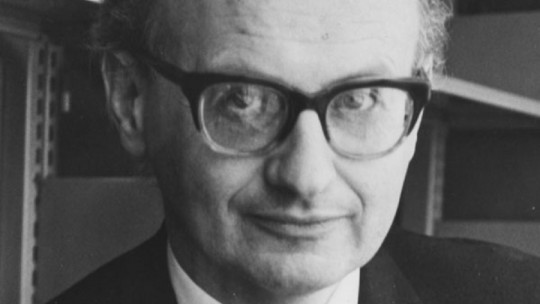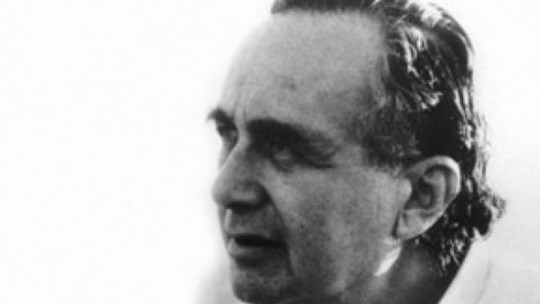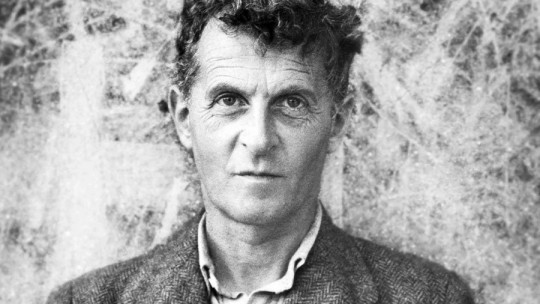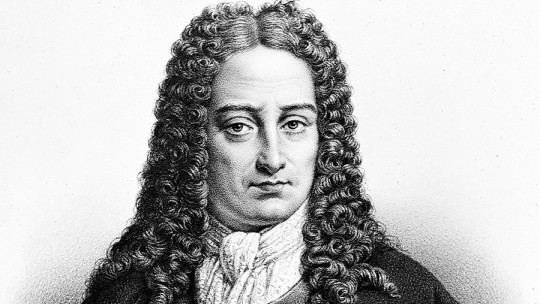Imre Lakatos was a philosopher and mathematician known for his philosophy of mathematics and science. He worked as a researcher and academic throughout his life, starting in his native Hungary, visiting the Soviet Union and eventually living in the United Kingdom.
His life is that of a person who witnessed the rise of Nazism while his family was of Jewish origin, having to manage to avoid the bloody repression of the Nazis and, later, that of the Hungarian communist government. Let’s see the story of him through a biography of Imre Lakatos
Brief biography of Imre Lakatos
Imre Lakatos was a Hungarian thinker of the last century, known for his philosophy of mathematics and philosophy of science. He contributed to these disciplines above all with his theses on the fallibility of mathematics, exposing his methodology on proofs and refutations at the same time as introducing the concept of research programs in its methodology on the investigation, elaboration and refutation of scientific theories.
As a character born at the beginning of the 20th century, he witnessed great political changes in his native Hungary, in addition to seeing how the European panorama was clouded during the first half of that century, especially for the Jewish community of which he was a part. He narrowly escaped Nazism, but despite being followers of communist theses, he would not be saved from the oppression of the communist regimes of the 1950s, forcing him to develop his intellectual activity abroad.
Early years
Imre Lakatos was born Imre (Avrum) Lipschitz on November 9, 1922 in Debrecen, Hungary, to a Jewish family of ancient origins. Being just a teenager he witnessed the rise of Nazism in Central Europe, which is why he changed his name to Imre Molnár, which sounded more purely Hungarian and, thus, avoid being a victim of anti-Semitic persecution. Sadly, his mother and grandmother were murdered in the Auschwitz concentration camp.
Well into the Second World War, Imre He actively participated in the anti-Nazi resistance, this being the moment in which he adopted the name by which we know him today: Imre Lakatos “Lakatos”, whose meaning in Hungarian is “locksmith”, was adopted in honor of Géza Lakatos, a Hungarian general who managed to overthrow a pro-Nazi government.
Although these times are turbulent and turbulent, this does not prevent Lakatos from starting to study mathematics, physics and philosophy at the University of Debrecen, obtaining his first academic degree in 1944. It is at this time that He begins to have his first contacts with the philosophy of what is scientific and how mathematics can be considered the object of philosophy , both to understand its reliability and falsifiability. A few years later, in 1948 he would defend his doctoral thesis at that same institution.
At a time when Nazism was committing its bloodiest atrocities, any ideology contrary to it seemed to be salvation. It was surely for this reason that Lakatos saw communism as an ideology full of benefits, applauding its arrival in 1947. He became part of the new regime, working as a senior official in the Hungarian Ministry of Education.
In communist Hungary
With the end of World War II came what seemed like a time of peace and cultural resurgence. Hungary was filled with new ideas, among them those of the Marxist philosopher Györy Luckács who gave his private seminars on Friday nights, seminars that Lakatos attended religiously. It seemed that Lakatos was going to enjoy more peaceful times than those of his youth.
However, soon all good luck would fade. After having studied philosophy at Moscow State University in 1949 under the direction of Sofya Yanovskaya, he would receive an unpleasant surprise. Returning to his homeland he saw that his friends were evicted from the communist party and Hungarian governments Hungary became a satellite state of the USSR, and anyone who was against official communism was considered a “revisionist”, and this is how Imre Lakatos was considered, being imprisoned between 1950 and 1953.
After serving his sentence he dedicated himself fully to academic activity, especially focusing on research in mathematics. He would also make some translations into Hungarian, such as that of his compatriot György Polya’s book “How to solve it”, originally written in English. He tried to progress academically within what the regime allowed him, despite government pressures
Although Lakatos called himself a communist, his political opinions changed significantly, especially due to his unjust imprisonment. This motivated him to join student groups critical of the situation of Hungary as a satellite state, materialized in the Hungarian popular uprising of October 1956. The following month The USSR invades Hungary to quell the uprising, which is why Lakatos decides to leave the country traveling first to Vienna and then to England.
Life in England and final years
Although he came to England fleeing a communist regime, his background as a supporter of that ideology prevented him from becoming a British citizen and he was denied British citizenship twice, which is why he remained stateless until the date of his death. Despite this impediment, he had a quite relevant academic life in his host country, being the place where he would not only develop much of his philosophy but also meet great thinkers of the time.
He was appointed professor at the London School of Economics in 1960, where he developed his work teaching philosophy of mathematics and philosophy of science Philosophers such as Karl Popper, Joseph Agassi and John Watkins worked in the philosophy department of this institution, with whom he was able to discuss his points of view and understand first-hand his philosophies. A year later he received a doctorate in Philosophy from the University of Cambridge.
Under the title of “Criticism and the Growth of Knowledge” he edited, together with Alan Musgrave, the topics discussed at the International Colloquium on the Philosophy of Science, held in London in 1965. This work published in 1970 contains the opinions of important epistemologists on “The structure of scientific revolutions” by Thomas Kuhn. A year later He would be appointed editor of the magazine “British Journal for the Philosophy of Science”
Lakatos continued teaching at the London School of Economics until his death, caused by a stroke on February 2, 1974. This same institution has been awarding the Lakatos Prize in his memory ever since. In 1976, “Proofs and Refutations” would be published, a posthumous work by Imre Lakatos that brings together his philosophy of mathematics and science based on the works and conferences he did in life, especially his doctoral work on English soil.
Evidence and refutations
Lakatos’ philosophy of mathematics takes inspiration from both Hegel and Marx’s dialectics, as well as Popper’s theory of knowledge and the work of the mathematician Györy Polya Imre Lakatos presents his particular philosophy in a curious way, resorting to a fictional dialogue in a mathematics class in which students make several attempts to prove Euler’s formula for algebraic topology.
This dialogue tries to represent all the historical attempts to prove said theorem about the properties of polyhedra, attempts that were invariably refuted by counterexamples. With him Lakatos tried to explain that no theorem in informal mathematics is perfect and that one should not think that a theorem has to be true simply because a counterexample has not been found.
Thus, Lakatos proposes an approach to mathematical knowledge based on the idea of heuristics, an idea that he tries to expose in his book “Proofs and refutations” that, although there are those who consider it as an idea that is not fully developed, it is nevertheless appreciated. credits the philosopher for having proposed some basic rules for finding proofs and counterexamples in conjectures.
Imre Lakatos considered mathematical thought experiments to be a valid way to discover mathematical conjectures and proofs and sometimes referred to this philosophy as “quasi-empiricism.” He considered that the community of mathematicians had carried out a kind of dialectic to decide which mathematical proofs were valid and which were not He disagrees with the formalist idea of proofs that can be found in the works of Frege and Russel, who defined proofs in terms of formal validity.
Scientific research programs
One of Lakatos’ most notable contributions to the Philosophy of Science has been his attempt to resolve the conflict between Popper’s falsificationism and Kuhn’s revolutionary structure of science.
It is often stated that Popper’s theory suggests that the scientist should discard a theory if he finds falsificationist evidence and that he should replace it with new, more refined hypotheses. On the contrary, Kuhn describes science as a body of knowledge that has consisted of periods of “normal science”, in which scientists maintain their theories despite there being anomalies or data that are not entirely viable, interspersed with periods of conceptual changes. deep
Popper recognized that certain new and apparently solid theories could become inconsistent with previous theories that, although not so recent, were well founded empirically. However, Kuhn maintained that even good scientists can ignore or discard evidence contrary to their theories, while Popper considered negative contrast as something to take into account to modify or explain a theory.
Imre Lakatos wanted to find a methodology that would allow him to harmonize these two points of view that, apparently, were contradictory. A method that could give a rational description of scientific progress consistent with historical records. He said that what we normally consider to be a “theory” could actually be a set of different theories with some differences but that shared a common idea: the hard core.
Those of these theories that were not fixed and unstable Lakatos called “research programs.” The scientist involved in a research program will try to shield the theoretical core from falsification attempts behind a protective belt of auxiliary hypotheses, something that Popper considered an ad hoc hypothesis. Lakatos considered that developing such a protective belt was not necessarily detrimental to a research program.
Instead of asking whether a hypothesis is true or false, Lakatos considered that one should analyze whether one research program is better than another and what is rational about preferring it. He in fact went on to demonstrate that in some cases a research program can be considered progressive, while its rivals can be degenerative. In the progressive ones, their growth and contribution of new compelling facts is evident, while the degenerative ones are characterized by a lack of growth.
In his work, Lakatos claimed that what he was doing was simply exposing Popper’s ideas and how they had been developed over time. In fact, he differentiated between different Poppers: Popper 0, Popper 1 and Popper 2. Popper 0 was the rudimentary falsificationist, who existed only in the minds of critics and supporters who had not understood Popper’s true ideas. These true ideas were understood as Popper 1, what Popper really wrote. Popper 2 was that same author but reinterpreted by his disciple Lakatos (Poppatos).
Lakatos agreed with Pierre Duhem’s idea that one can always protect a belief from hostile evidence by redirecting criticism toward other beliefs The falsificationist theory maintains that scientists expose theories and that, through inconsistent observation, that theory should be rejected when seeing that it does not correspond to reality or nature. Lakatos, on the other hand, considers that if a theory is proposed and it presents some inconsistency with nature, this inconsistency can be resolved without necessarily abandoning the research program or theory.
Lakatos stated that a research program contains methodological rules, some of which instruct on which aspects of research to avoid (negative heuristic) and some which instruct on which aspects to follow (positive heuristic). The positive heuristic expands the protective belt around the hard core, while the negative one involves adding auxiliary hypotheses to protect that same core against any possible refutation.
Lakatos stated that not all changes in the auxiliary hypotheses of a research program are equally acceptable. These changes must be evaluated both for their ability to explain refutations and to produce novel results. If both things are achieved, the changes will be progressive. On the other hand, if they do not lead to new facts, they are only ad hoc or regressive hypotheses.









